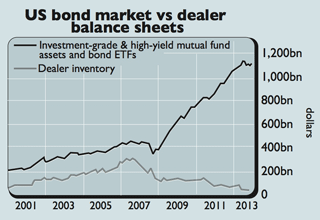
Earlier this year, the Financial Times reported that the Federal Reserve was considering imposing exit fees on US-based corporate bond funds to reduce the risk of a potential run on these funds. On the face of it, this may not sound like a good idea: after all, there are few things more likely to start a panic than telling people you’re going to make it harder to withdraw their money.
But misguided or not, it’s a clear sign that regulators are concerned about the mismatch between how easy it is for investors to pull money out of funds and how difficult it might be for the funds to meet those redemptions.
This risk exists because most funds allow investors to withdraw their money daily. So a fund that receives a large volume of redemptions may need to sell a significant amount of assets within hours to raise cash.
With stocks, that wouldn’t usually create many difficulties, except at times of extreme market stress. But most corporate bonds are far less liquid than equities: they change hands in infrequent large block trades arranged through broker-dealers instead of continuous, transparent trading on an exchange.
If investors began pulling large amounts of money from multiple funds, the market might not be able to absorb all the resulting sales in an orderly manner. That could lead to a fire sale by funds desperate for liquidity, leading to a spiral of falling prices and panicked selling.
This isn’t a new problem in bond sell-offs, but there are reasons to think that this “liquidity risk” is now very high. The amount of money invested in bond funds has soared (see chart), so the rush to get out when the market turns could be large.
Meanwhile, a key liquidity buffer has shrunk. Historically, the major bond dealers – the trading desks of major investment banks – have acted as market makers, meaning that they’ve been willing to buy when other investors are selling.
But this role involves holding a large stock of bonds, and a combination of lower risk tolerance and tougher regulation in the US has made it less attractive, as their falling bond inventories show.
Factor in the impact of exchange-traded funds, whose need for reliable liquidity could add even more selling pressure in a panic, and it’s easy to see how a sell-off might get out of hand. With bond valuations stretched, regulators are right to be worried. Investors should take note.